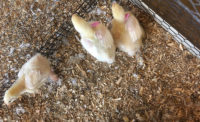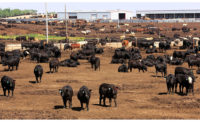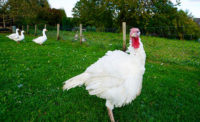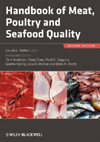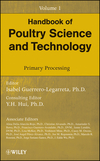Summer always seems to linger this time of year. Sunglasses block the sun’s rays, beach sand warms your feet and cold beverages are topped with tiny umbrellas. Sounds like a great vacation for me, but the hot temperature and high humidity of summer bring the potential for heat stress in poultry.
In my observations, it is most interesting that in nearly every aspect of animal management — from the lighting program and ventilation system to handling procedures — these details of production affect quality of life, reproduction and growth, and often are reflected in poultry commodities.
For birds, a high heat index, and the resulting heat stress, is an issue that affects all of these concerns. From both an anatomical and physiological standpoint, stress is a complex phenomenon and includes stress from the environment, such as heat stress, and stress from other facets, such as the immune system.
Adverse stimuli that can cause changes in bird behavior are handling, transportation conditions or cooping. These conditions have been known to cause behavioral changes in response that can be seen as metabolic changes, such as gastrointestinal disruptions because of management-induced fasting. These can even influence the bird’s immune system, which may increase susceptibility to diseases.
In modern poultry production, not all facilities have the best ventilation conditions. Some are curtain side or opened to pasture, especially as organic and pasture-raised birds become more and more common. Although certain aspects of these production systems can be beneficial, it can also expose birds to adverse environmental elements leading to other production problems. Even in facilities that are designed to control as many environmental components as possible, there is still potential for stressors.
In the event that birds are placed in a facility equipped with cooling cells and all of the bells and whistles of today’s technological advances, other management events, such as moving between locations, cooping and transporting under various conditions may still result in stress and high mortality rates.
Because birds do not sweat, they must rely on other thermoregulation processes, including panting, wing stretching, increased water intake, digging into litter to find cool spots, and other behavioral changes to cope with high heat indices. All of these behavioral changes may lead to decreases in meat production because the bird must focus unnecessary energy on thermoregulation processes instead of tissue deposition. It has been well-documented that birds placed under increased heat have decreased feed intake, which in turn leads to decreased weight gain and meat production.
Heavy toms are one of the birds most susceptible to heat stress. Genetic predisposition for fast growth has put constraints on the bird’s heart and other organs. Once placed under increased heat conditions this genetic predisposition may cause an increase in mortality. This is why it is important to be aware of a bird’s coping mechanisms. If birds must be moved to a significantly warmer location than their current surroundings, it may be beneficial to increase their environmental temperatures gradually so they can acclimate to the new environment before moving, for example. However, there is no one good solution to a heat stress situation and sometimes common sense is the most important tool for a production manager. NP





